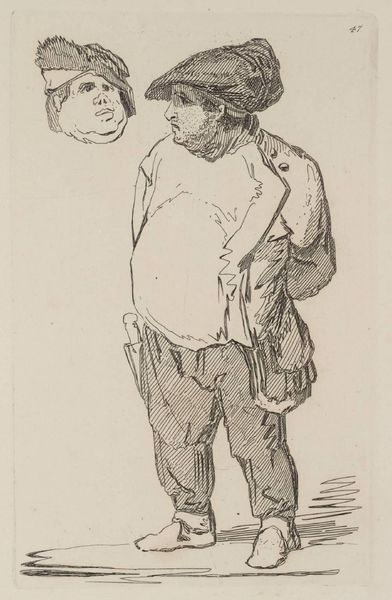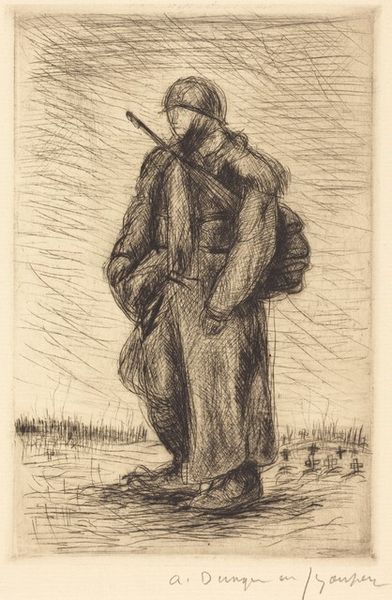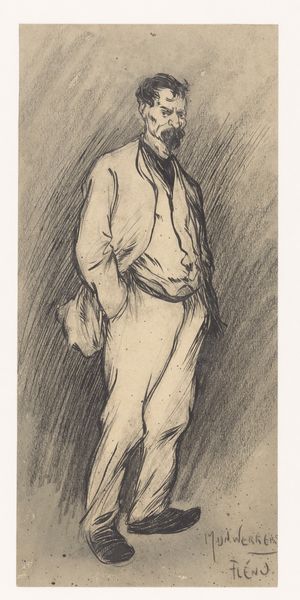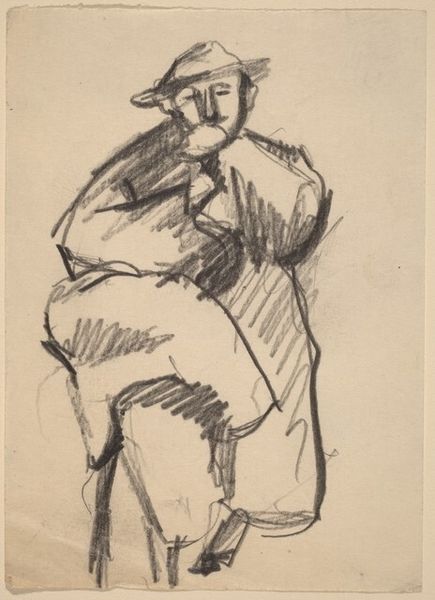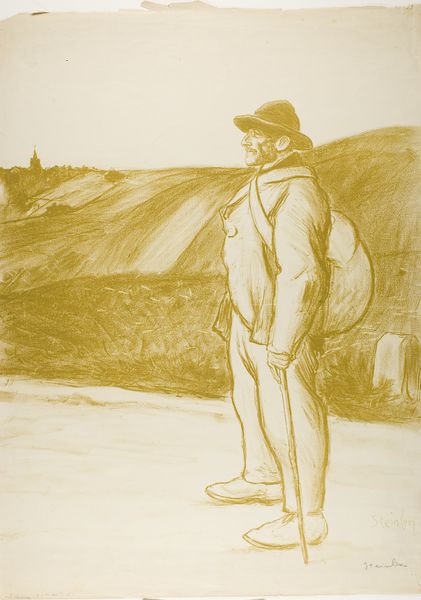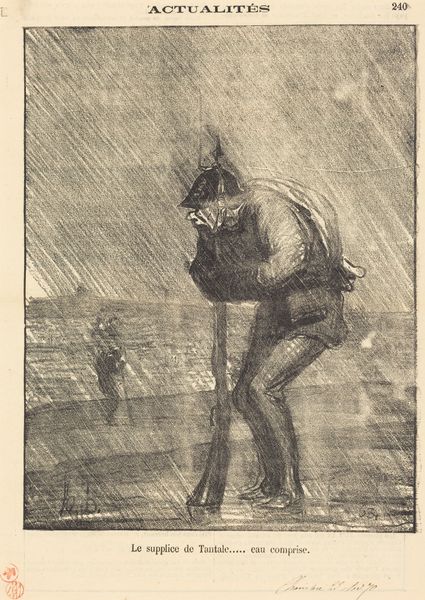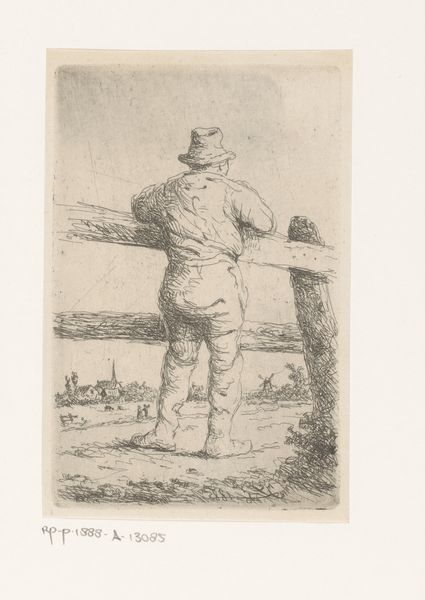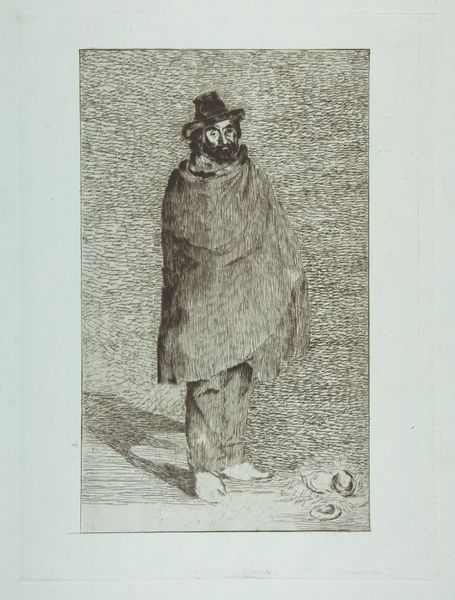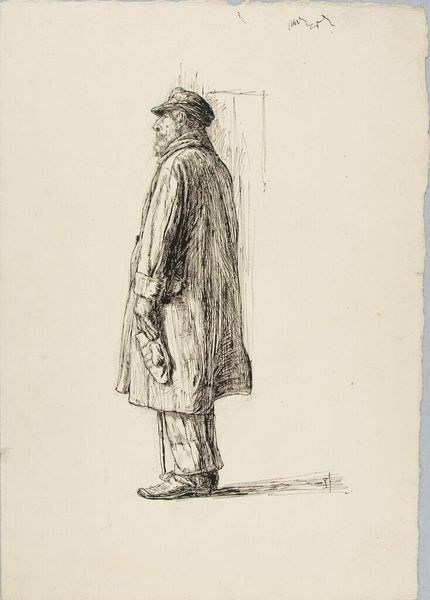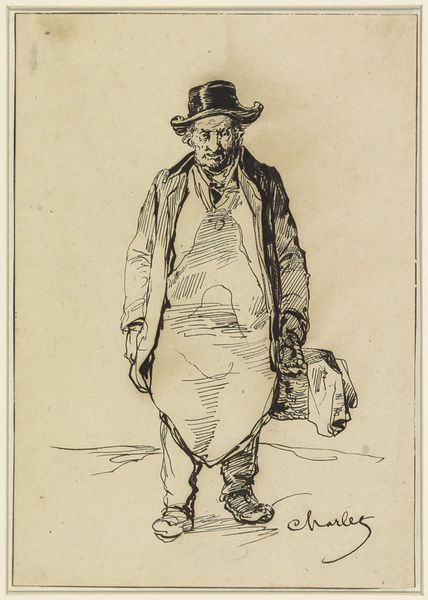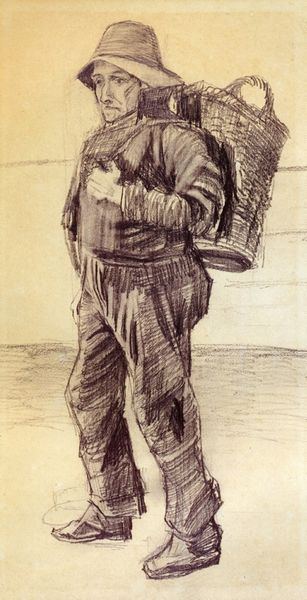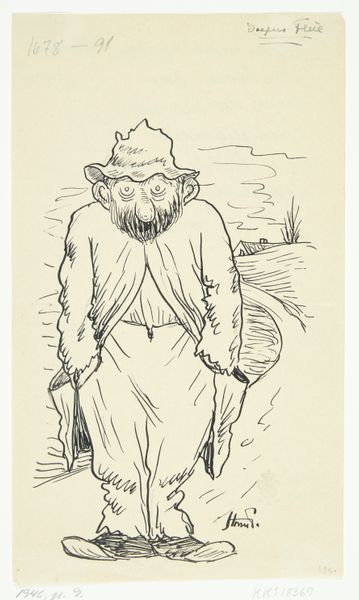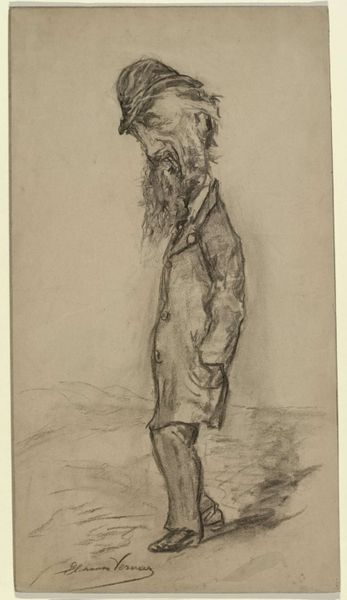
drawing, pencil
#
portrait
#
drawing
#
light pencil work
#
shading to add clarity
#
pen illustration
#
pen sketch
#
pencil sketch
#
landscape
#
personal sketchbook
#
ink drawing experimentation
#
sketch
#
pen-ink sketch
#
pencil
#
symbolism
#
sketchbook drawing
#
pencil work
#
realism
Copyright: Public domain
Curator: Let's discuss Théophile Alexandre Steinlen's 1897 drawing, "Le Chemineau." What's your immediate read of this piece? Editor: Stark and resigned. The monochromatic palette amplifies the isolation of the figure. The soft pencil strokes create an unfinished quality, but the man himself looks firmly set in his situation, burdened and alone on his journey. Curator: The composition definitely lends itself to that interpretation. We have this figure front and center, yet he’s placed on the periphery of the landscape which dominates most of the drawing. Consider the way Steinlen employs contrast: dark shading versus almost untouched areas, emphasizing the textural contrast between the man and the rolling landscape behind him. Editor: Right, and thinking about the social climate of the late 19th century, this figure takes on another layer of meaning. Steinlen, known for his social realism and depictions of marginalized figures, presents here what looks to me like a commentary on class and the plight of the working man or vagrant. His pack suggests a life of transience, maybe economic hardship. Curator: It is certainly more than a portrait of a vagrant. The use of line is fascinating. Note the subtle blending of graphite on the slopes juxtaposed with the crisp delineation of his facial features and attire. It calls to mind some of the compositional structures you see during symbolism. Editor: The spire in the background pierces the sky, underscoring that class division; it implies the presence of established society. There's an intentional contrast there: the rooted, seemingly stable institution versus the nomadic individual. His averted gaze, looking into the distance, speaks volumes. He embodies the spirit of his era's social issues—poverty, displacement, and disenfranchisement. The stick may symbolize the burdens of poverty that are meant to weigh the character down. Curator: From a formalist perspective, I'm drawn to the deliberate balance and economy of line. He doesn’t have any adornments of symbolism other than the very bare nature of this wandering person. Editor: Absolutely. Steinlen's strength lies in making these complex issues tangible and human. Curator: It makes me see that Steinlen balances formalist concepts with a keen observational ability. Editor: And for me, that convergence offers a powerful reminder of art's capacity to reflect, critique, and, ideally, ignite action.
Comments
No comments
Be the first to comment and join the conversation on the ultimate creative platform.

